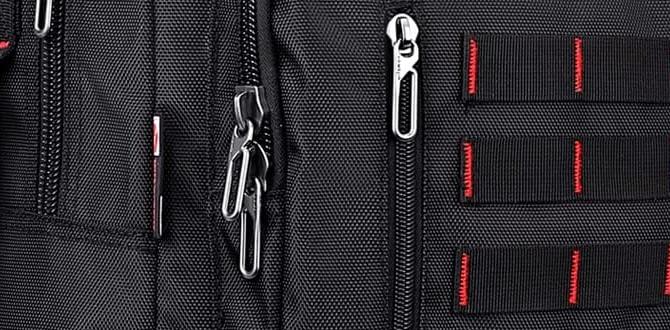Easton catchers throat guards offer crucial protection for players. Choosing the right one involves understanding key features like material, attachment style, and coverage area. This guide breaks down popular Easton models to help you make an informed decision for optimal safety and performance behind the plate.
Catching a baseball is thrilling, but it comes with risks. The most vulnerable spot? Your throat. A foul tip, a wild pitch, or even a stray swing can cause serious injury. That’s where a catcher’s throat guard comes in – it’s a non-negotiable piece of equipment for any catcher. Easton is a leading name in baseball gear, and they offer several throat guard options. But with different designs and features, how do you pick the best one for you or your young player? We’ve got you covered. This guide will simplify the world of Easton catchers throat guards, comparing the most popular models to ensure you get the right protection without sacrificing comfort or visibility. Get ready to understand what truly matters when choosing this essential piece of gear.
Why is a Catcher’s Throat Guard So Important?
Behind the plate, a catcher faces a barrage of fast-moving projectiles. While a helmet and mask offer vital head and face protection, the throat remains a critical area for injury. A direct impact to the throat can lead to severe consequences, including difficulty breathing, vocal cord damage, and even more life-threatening conditions. Therefore, a well-designed throat guard acts as a crucial secondary layer of defense. It’s not just about preventing a minor bruise; it’s about safeguarding a fundamental aspect of a player’s well-being and ability to play the game. For parents and coaches, ensuring youth players have this protection is paramount to fostering a safe and enjoyable baseball experience. The National Operating Committee on Standards for Athletic Equipment (NOCSAE) has established standards for protective equipment, underscoring the importance of such gear.
Understanding Throat Guard Types and Features
Easton offers a range of throat guard designs, and understanding their variations will help you make the best choice. Key features to consider include:
Material: Most throat guards are made from durable plastics, often high-impact ABS or similar polymers. Some may feature padding for added comfort.
Attachment Style: Throat guards typically attach directly to the catcher’s mask. They can be screw-on or clip-on styles. Ensure the guard you choose is compatible with your existing mask.
Coverage Area: Different models offer varying degrees of protection. Some are more minimalistic, covering just the essential lower throat area, while others extend further down to offer broader coverage.
Ventilation: Proper airflow is important to prevent overheating. Some designs incorporate vents to allow for better circulation.
Weight and Flexibility: A lighter, more flexible guard can improve comfort and mobility without hindering performance.
Easton Throat Guard Comparison: Key Models
Let’s dive into a comparison of popular Easton throat guard models. While specific model names and features can evolve, these categories represent common offerings:
Model 1: The Classic Extended Guard
This is often the most common and widely used style. It’s designed to provide robust protection for the lower portion of the throat and upper chest area.
Pros:
Excellent coverage.
Durable construction.
Generally compatible with many standard catcher’s masks.
Often the most budget-friendly option.
Cons:
Can sometimes feel a bit bulky.
May slightly restrict peripheral vision if not positioned correctly.
Might offer less ventilation than more specialized designs.
Model 2: The Streamlined/Low-Profile Guard
Designed for catchers who prioritize maximum mobility and a less obtrusive feel, these guards are typically shorter and designed to fit more snugly against the mask.
Pros:
Lightweight and less restrictive.
Improved visibility and feel.
Often more aerodynamic.
Cons:
Offers less coverage than extended models.
May not be suitable for younger players who need maximum protection.
Attachment might be more specific to certain mask models.
Model 3: The Padded Comfort Guard
Some Easton guards come with added foam padding around the edges or on the inner surface. This aims to enhance comfort during long games or practices.
Pros:
Increased comfort, reducing chafing or pressure points.
Can provide a slightly more secure fit.
Cons:
Padding can absorb sweat, potentially leading to odor or hygiene issues if not cleaned regularly.
May add a small amount of bulk.
Can be slightly more expensive.
How to Choose the Right Easton Throat Guard for You
When selecting an Easton throat guard, consider these factors:
Age and Skill Level: Younger, less experienced players or those in high-impact leagues will benefit most from maximum coverage. More advanced players might opt for a streamlined design if they are comfortable with the trade-off in coverage.
Mask Compatibility: This is crucial. Always check the product description or consult with a sales representative to ensure the throat guard will securely and properly attach to your specific catcher’s mask model. Many guards use a universal mounting system, but it’s best to be sure.
League Regulations: Some baseball or softball leagues may have specific rules regarding the type or size of protective equipment allowed. Always check your league’s rulebook.
Personal Comfort: What feels comfortable to one player might not feel comfortable to another. If possible, try on a guard or consider models known for their ergonomic design. Factors like weight, flexibility, and how it interacts with your mask and helmet are key.
Budget: Eastons throat guards generally range in price, but even the most affordable options provide essential protection. Prioritize safety over extreme cost savings.
Installation and Maintenance Tips
Installing most Easton throat guards is a straightforward process. They typically attach using screws that go through pre-drilled holes in the mask frame.
1. Identify Attachment Points: Locate the screw holes on your catcher’s mask where the throat guard is designed to mount.
2. Align the Guard: Position the throat guard against the mask, aligning its mounting holes with those on the mask.
3. Insert and Tighten Screws: Use the provided screws (or suitable replacements if necessary) to fasten the guard to the mask. Tighten them securely, but avoid overtightening, which could strip the screws or damage the mask.
4. Test the Fit: Gently tug on the guard to ensure it’s securely attached and doesn’t wobble. Check that it doesn’t obstruct your vision or interfere with the helmet’s fit.
Maintenance is key to longevity and hygiene:
Regular Cleaning: After each use, wipe down the throat guard with a damp cloth and mild soap. This removes sweat, dirt, and bacteria.
Deep Cleaning: Periodically, you may want to remove the guard and give it a more thorough wash, perhaps with an antibacterial cleaner.
Drying: Always allow the throat guard to air dry completely before storing it. Do not use heat, as it can warp the plastic.
Inspect for Damage: Regularly check for cracks, loose screws, or signs of wear and tear that could compromise its protective integrity.
FAQ: Your Easton Throat Guard Questions Answered
Q1: Do all catcher’s masks work with Easton throat guards?
No, not all masks are universally compatible. While many Easton throat guards use standard mounting systems designed to fit most masks, it’s essential to check the specific compatibility of the guard with your mask model. Always refer to the product details or consult the manufacturer.
Q2: How much protection does an Easton throat guard really offer?
Easton throat guards are designed to protect the vulnerable throat area from direct impacts like foul tips and errant pitches. They significantly reduce the risk of serious injury compared to not wearing one. However, they are not foolproof; proper catching technique and awareness are still crucial.
Q3: Can I use an Easton throat guard for baseball and softball?
Yes, in most cases. Easton throat guards are designed to fit standard catcher’s masks used in both baseball and softball. However, always verify any league-specific regulations that might apply.
Q4: How often should I replace my Easton throat guard?
You should replace your throat guard if you notice any cracks, significant wear, or if it becomes loose and cannot be securely reattached. Even without visible damage, it’s wise to consider replacing it every few seasons, especially if it is subjected to frequent, hard impacts or extreme weather conditions.
Q5: Is a throat guard necessary for youth players?
Absolutely. Youth players are still developing their reflexes and understanding of the game’s dangers. A throat guard is a critical piece of safety equipment that should be mandatory for all young catchers to prevent potentially severe injuries.
Q6: Will a throat guard make it harder to breathe?
A properly fitted throat guard, like those from Easton, should not impede breathing. Their design allows for adequate airflow. If you experience breathing difficulties, double-check that the guard is correctly installed and not rubbing against your throat in a way that feels restrictive.
Q7: Can I wash my Easton throat guard in a washing machine?
It is not recommended to wash a throat guard in a washing machine. The harsh agitation and heat can damage the plastic, padding, and attachment mechanisms. Hand washing with mild soap and water is the safest and most effective method for cleaning.
Beyond the Throat Guard: Essential Catcher’s Gear
While the throat guard is a vital component, remember that comprehensive catcher’s gear is essential for safety and performance. This includes:
Catcher’s Helmet: The primary piece of head protection, designed to withstand impacts.
Catcher’s Mask: Often integrated with the helmet, it protects the face from pitches and batted balls.
Chest Protector: Guards the chest, abdomen, and sternum from pitches and collisions. They come in various lengths to accommodate different player sizes.
Leg Guards: Protect the shins, knees, and feet from foul balls and slides.
* Catcher’s Mitt: A specialized glove designed for catching fast pitches and blocking balls.
Using high-quality equipment from reputable brands like Easton, along with proper training and technique, creates a strong foundation for any catcher. For more on selecting the best mitts, check out our guide on choosing the best catcher’s mitt.
Conclusion: Protecting Your Most Crucial Asset
Your throat is an incredibly sensitive area, and protecting it behind the plate is non-negotiable. Easton offers reliable and effective throat guards designed to keep you safe, allowing you to focus on making great plays. Whether you opt for maximum coverage with an extended guard, prioritize mobility with a streamlined model, or enjoy the added comfort of padding, the key is to choose a guard that fits your mask securely, meets any league requirements, and feels right for you. By understanding the options and investing in quality protection, you’re not just buying a piece of gear; you’re investing in your ability to play the game you love, safely and confidently. So, grab that Easton throat guard, secure it properly, and step behind the plate with the peace of mind that you’re taking a critical step to protect yourself for every pitch.



